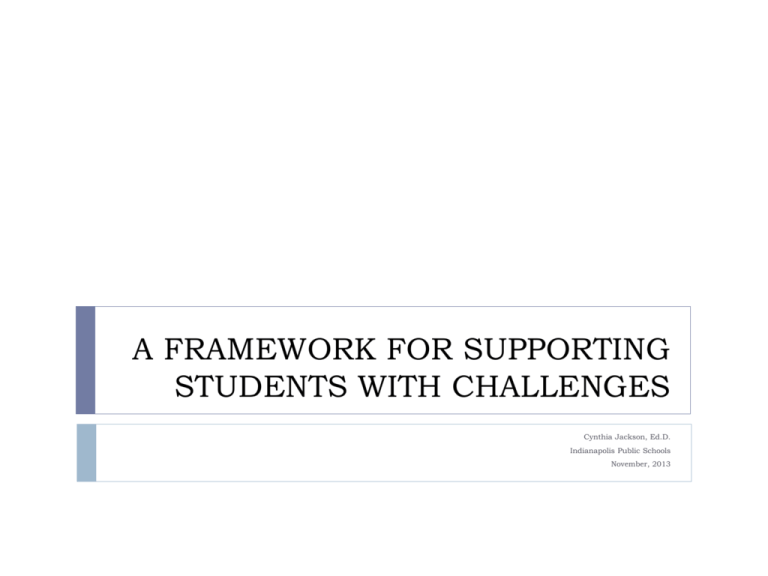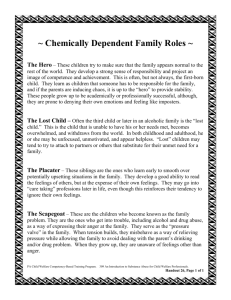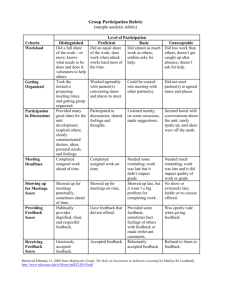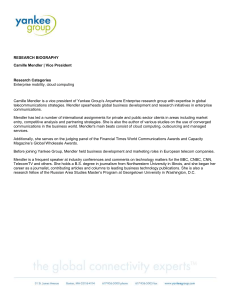a framework for supporting students with challenges
advertisement

A FRAMEWORK FOR SUPPORTING STUDENTS WITH CHALLENGES Cynthia Jackson, Ed.D. Indianapolis Public Schools November, 2013 “The circle is a sacred symbol of life…individual parts within the circle connect with every other , and what happens to one, or what one part does, affects all with in the circle.” Virginia Driving Hawk Sneve A LOOK BACK… Thinking about… What How have you learned well? did you learn it? What do you remember about your favorite teachers or adults in your life? How Does Developmental Need Theory Help Our Work? Belonging Mastery Independence Generosity (Brendtro, et al, 1990) Love, affection Fun Power / freedom Survival, security Physiological needs (Glasser, 1990 Maslow, 1968) What Do Children Say They Need? Friends who care for you and you for them Fun and challenging things to do Having choices and learning how to make choices A chance to master the skills needed to pursue a dream Physical well-being Status and a “cool” reputation Unconditional love, someone who will always be your advocate A chance to make a difference in someone’s life What do we know about today’s children? Over past 25 years youth have spent more time alone than any generation. Thus missing a coherent sense of community. Bonds between children and adults are changing. Technology is a response to alienation (Hersch, 2000). In the past play was creative and influenced by rules and boundaries. Today’s play is very individualized. “The world is on a screen”, not providing a sense of place (Dargan, 2002). Over 100,000 biracial children born each year since 1989. Students of color will make up 46% of the nation’s student population by 2020. In urban centers at least 75% of students are of color. 1 in 5 children under 6 live below the poverty line. Over past 30 years more children living in “risk” in a “socially toxic environment” that undermines the security of families and communities. Are we more aware of the problems today than before? (Garbarino). 11% of children born in 1950’s experienced their parents separation or divorce. Recent statistics reveal that over 55% of children experienced this family disruption. Violence, in various direct and indirect forms, effects 1 in 5 youth in today’s communities. WHAT NEEDS IS YOUR PROGRAM DESIGNED TO MEET? Tier 3: Individualized Supports for a FEW •Functional thinking *Coordination with family •Specialized intervention plans Tier 2: Targeted Supports for SOME • Accommodations & booster skill instruction • Modifying how adults respond Tier 1: Universal Supports for ALL • Grounded in need-based & asset building thinking • Safe, supportive climate • Meaningful , relevant instruction & programming • Routines and procedures • Relationship and rapport SUPPORTS FOR ALL Prevention of problems is goal. Provide autonomy within structure…choices Set clear & consistent expectations Discipline replaces punishment…teach, model, reinforce Use logical & natural consequences Demand “greatness” instead of obedience Skills assessment…no assumptions Mobilize the positive power of peers. Personalized and relevant instruction and activity WHAT IF….WHAT DO YOU DO? • Youth is continually disrespectful. • Youth has difficulty completing a tasks. • Youth verbally bullies peers to get his way. SUPPORTS FOR SOME Built upon the universal foundations. Re-teach, reinforce and repeat Intentional, caring relationships Understand student’s anxieties and fears so can respond Understand that behavior serves a function for student Crisis is an opportunity for learning new skills Disengage from conflict cycle Earn trust Respect begets respect Teach joy and nurture confidence What Influences How Students Respond to Stressful Incidents? Student’s feelings about his/her competency. “I am stupid if I make mistakes” or “I feel good when I try.” Student’ feelings (positive or negative) about the event. The thoughts about it, not the event itself. “I can handle this.” or “I know I will fail this test.” How adults support the student. How would this influence student feelings? The Conflict Cycle Student’s Self-Concept 1 Stressful Event 4 2 Student’s Feelings Adult/Peer Reactions 3 Student’s Observable Behavior Understand Thoughts & Feelings Influence Behavior Students act out or escape if they are fearful, anxious, uncertain or Students accept feelings and use coping skills to manage frustration / stress / anxiety RESPOND, NOT REACT Convey support through body posture and communication style. Use eye contact or the opposite as needed to provide “space”. Avoid excessive touch. Maintain physical proximity or distance as needed. Convey interest and support through facial expressions. Control physical gestures. Use supportive stance. Interventions That Do Not “Work” Direct Confrontation Elevated Voice Angry Tones Scolding Nagging Sarcasm Overcorrecting Threatening Punishment Grabbing Telling Public Power Displays Public Personal Redirects Power Struggles Abruptly Invading Their Space Exclusion Delegating Interventions / Control to Others SUPPORTS FOR A FEW Individualized problem solving is required. Clarify the goal or replacement behavior needed to be successful. Successful intervention at this level requires collaboration and family support. If child has disability, understanding of how the disability impact the observed behaviors adds information to influence strategies. “Unless someone like you cares a whole awful lot, nothing is going to get better. It’s not!” Dr. Suess RESOURCES Brendtro, L. & Shahbazian, M. (2004). Troubled children and youth: Turning problems into opportunities. Champaign, IL: Research Press. Curwin, R.L., Mendler, A.N., & Mendler, B.D. (2008). Discipline with dignity: New challenges, new solutions. (3rd ed.). Alexandria,VA: ASCD. www.behavioradvisor.com/oldindex.html www.interventioncentral.org www.ldonline.org www.nichy.org www.air-dc.org/cecp







